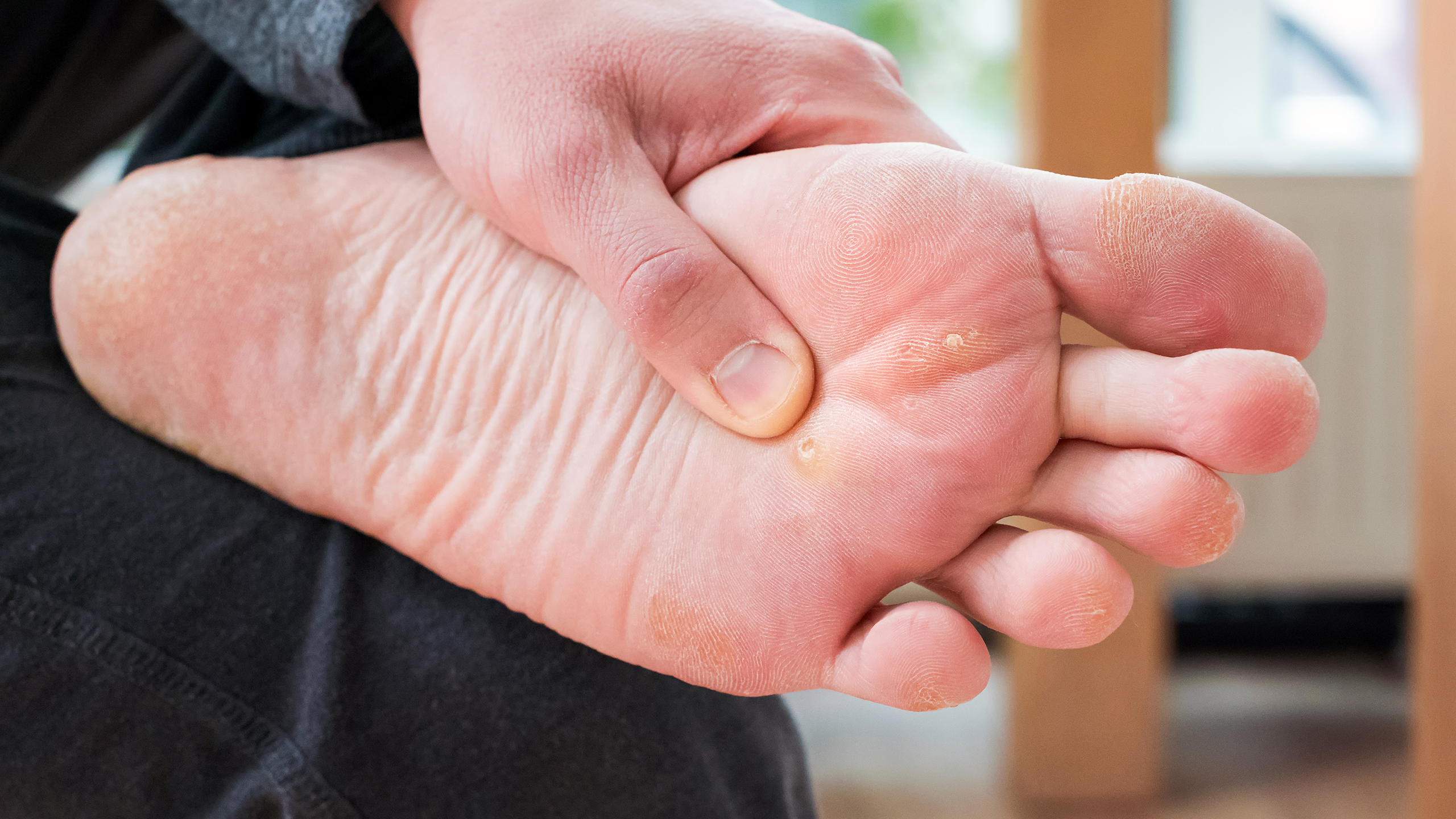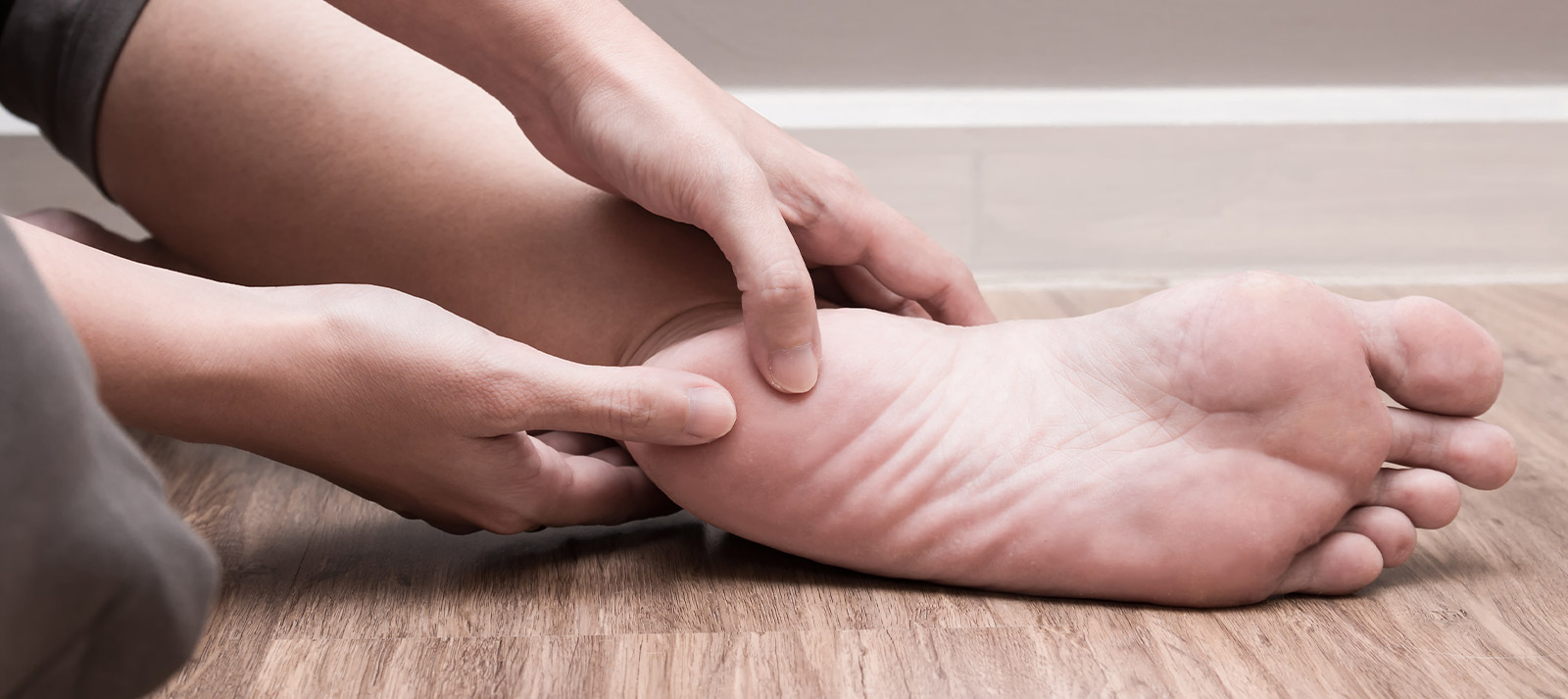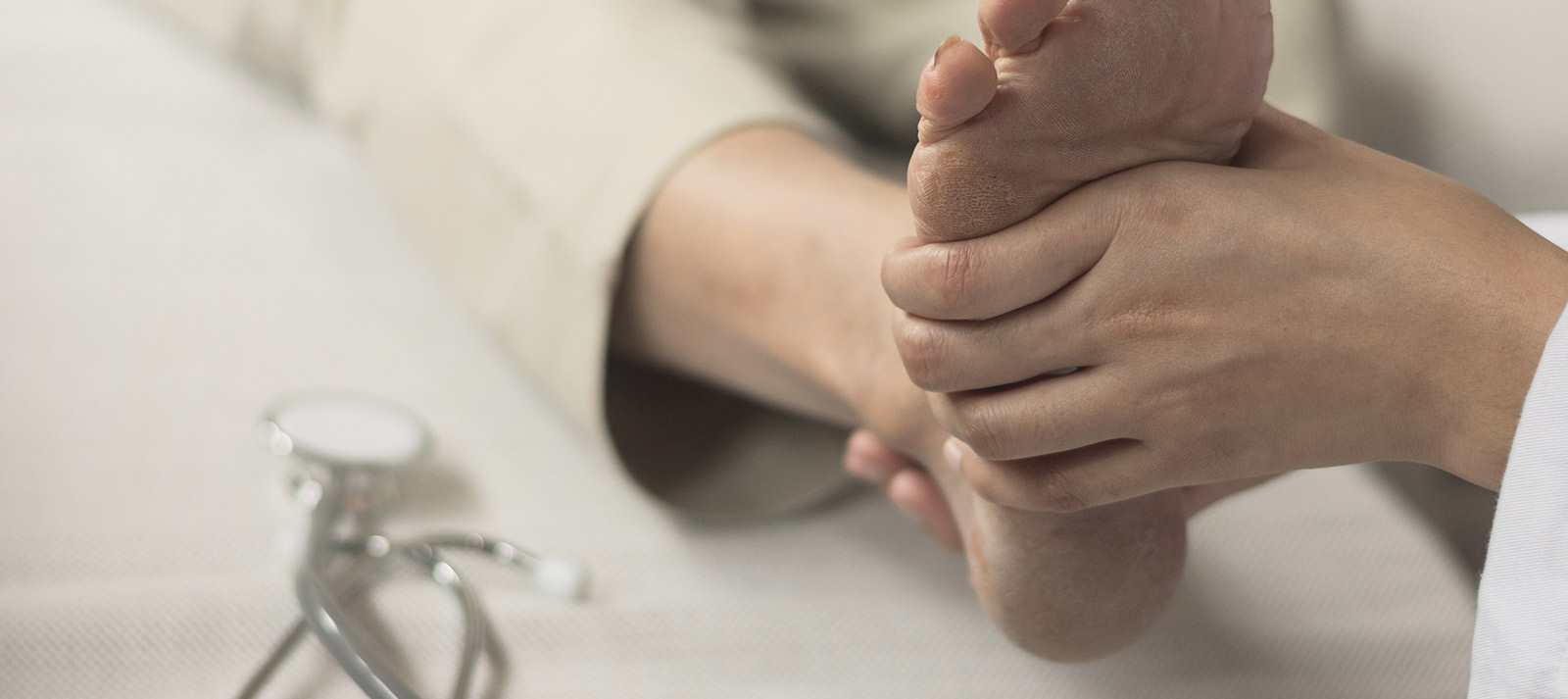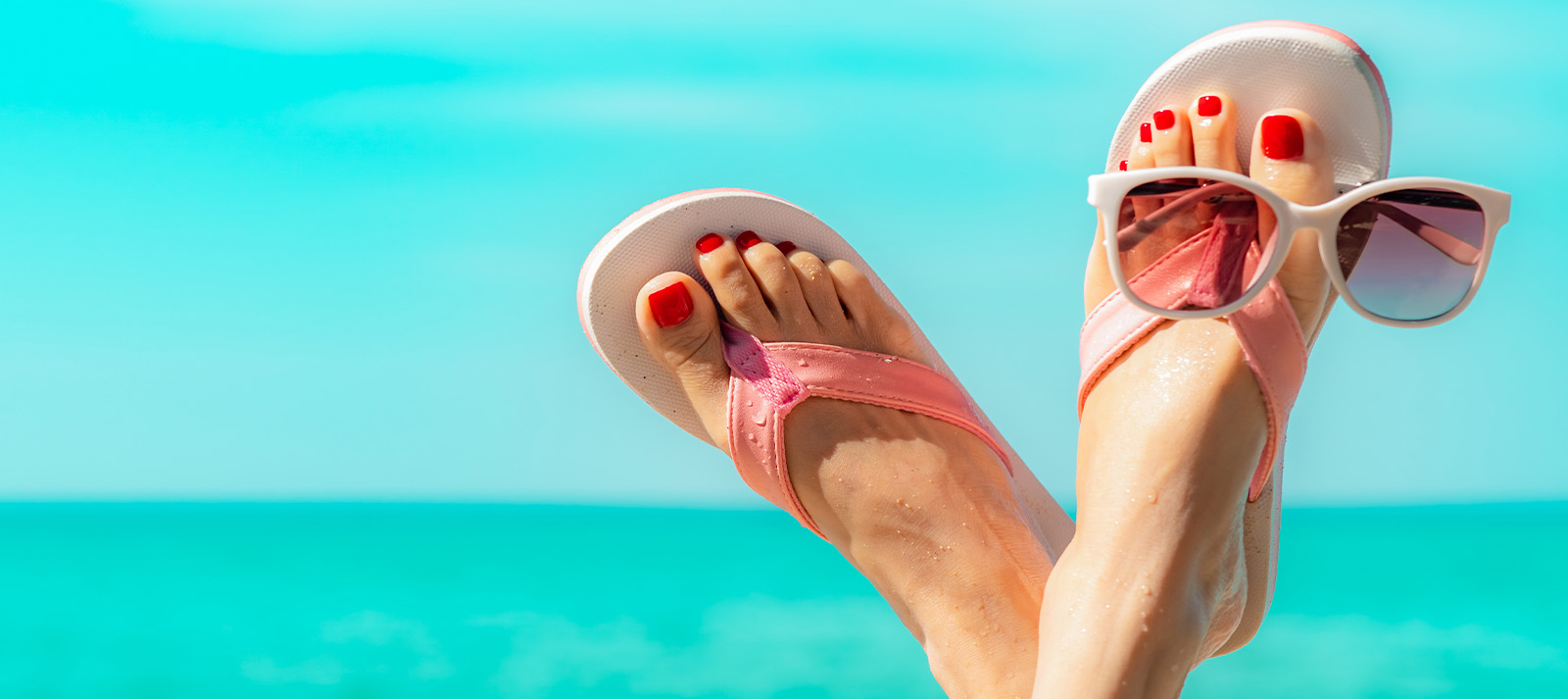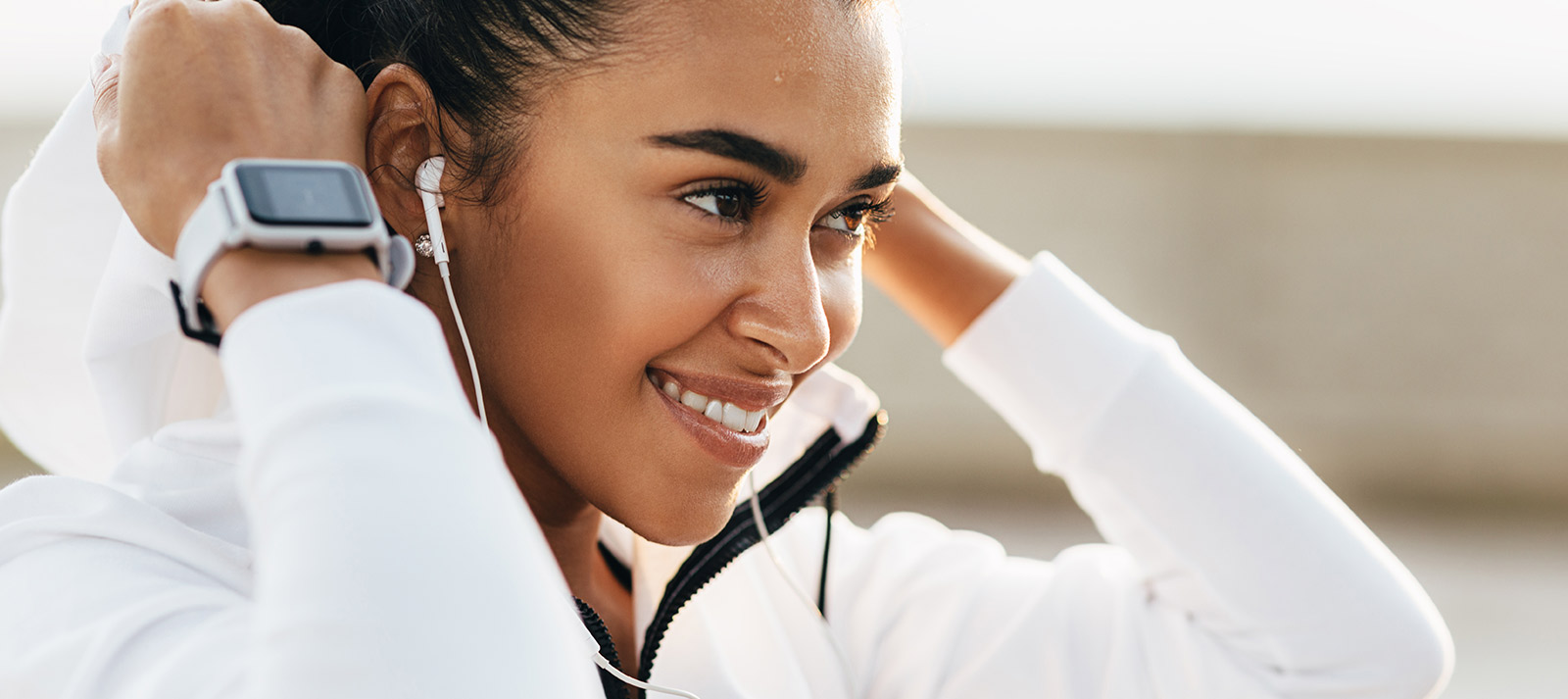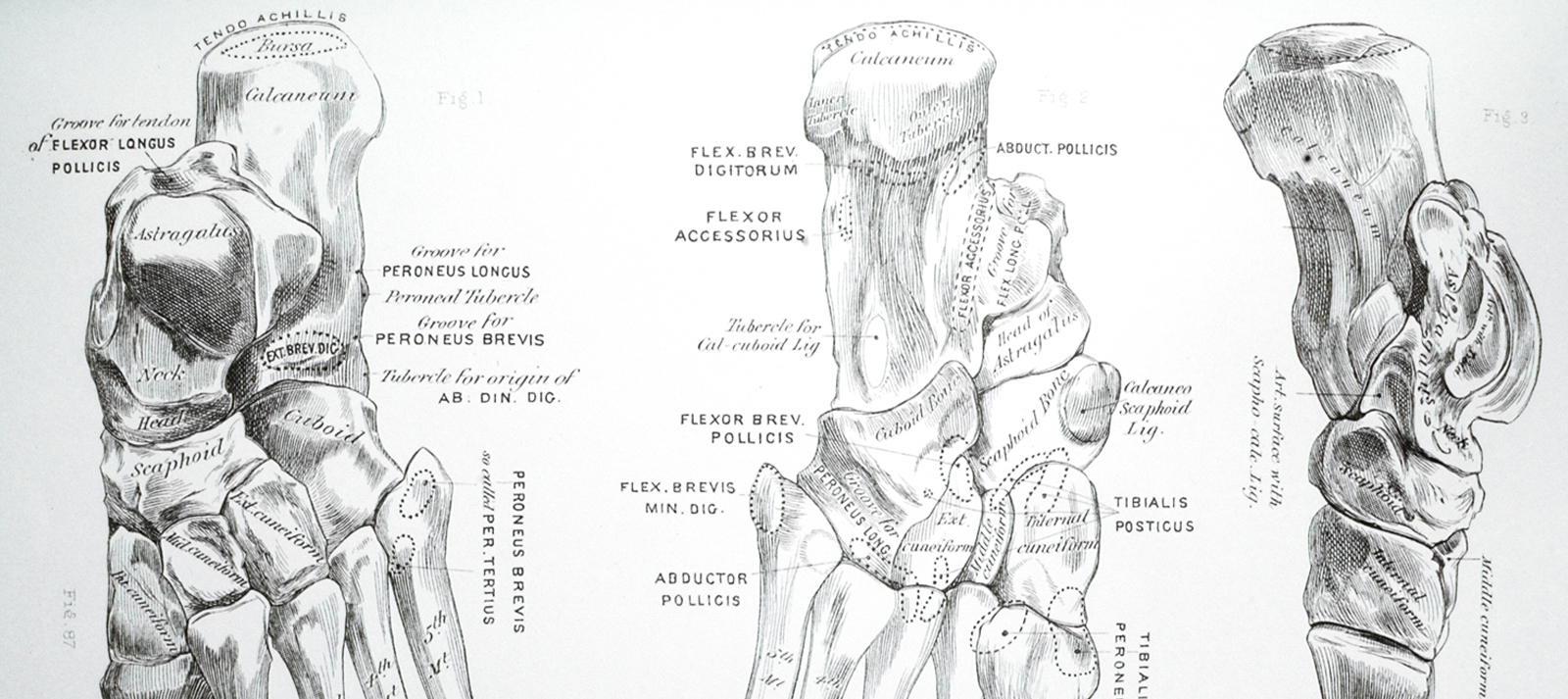Callus 101: Causes, Prevention and Treatment
Callus 101: Causes, Prevention and Treatment
Foot calluses, or rough patches of skin found on the ball, heels or small toes, is a normal occurrence for most people. Caused by compression and friction, foot calluses are your body’s way of protecting the skin underneath from irritation and pressure.
Though calluses are a normal occurrence for most people, some patients are more likely to develop calluses than others. If you walk without socks, wear shoes that are too narrow for your feet or you already have a medical condition that changes the normal alignment of the bones in your feet, you’re more likely to develop calluses on your feet.
How do I prevent calluses?
Foot calluses can be prevented by wearing proper socks and shoes, including proper fitting footwear both width and lengthwise. Ensuring that worn shoes are repaired and replaced regularly can give your skin some protection from the shock of walking on hard surfaces.
How do I treat calluses?
There are numerous home remedies to reduce the appearance of calluses, though the majority of calluses can be resolved with time off of your feet. You should refrain from using sharp objects to remove or reduce calluses, as this could lead to infection.
If you’re looking to reduce the calluses on your feet, try these home remedies:
- Epsom Salts: Soaking your feet in a handful of Epsom salts in a bath or basin of warm water for ten minutes can greatly soften calluses, especially before manual exfoliation
- Padding: Adding moleskin patches or soft pads can help to protect the skin from rubbing against shoes or socks.
- Shoe inserts: Cushioned insole, arch support and heal counters can help to reduce friction on the skin, especially by moving pressure away from any problem areas.
If you are still experiencing pain from your calluses, be sure to schedule an appointment with one of our board-certified foot and ankle specialists. At Balance Foot & Ankle, we’re here to restore your balance and get you back on your feet.
Video: Plantar Fasciitis
Video: Plantar Fasciitis
Plantar fasciitis is an inflammation of the thick piece of tissue that runs under your foot. This tissue, called the plantar fascia, can become inflamed if you have high or low arches, are wearing the wrong shoes for you, or from injury or overuse. Over time, continuing physical activities, like running and dancing, or constant standing and movement can lead to plantar fasciitis. This inflammation is one of the most common orthopedic foot complaints that can also lead to chronic plantar fasciitis. Prevention through stretching and proper shoe gear is important to keep up your everyday activities without pain.
Let us restore your balance.
If you notice the discomfort in your heels persisting, our trusted team of podiatrists at Balance Foot & Ankle can work with you to alleviate the pain by customizing a treatment plan to your lifestyle.
Daily Stretches To Prevent Plantar Fasciitis
Daily Stretches To Prevent Plantar Fasciitis
If you’re waking up with a stabbing pain in the heel of your foot with your first steps, you could be among the more than 2 million Americans with plantar fasciitis. There are many times in which discomfort from plantar fasciitis occurs, especially during long periods of walking, standing or running. Sometimes, even wearing the wrong kind of shoes can irritate your plantar fascia.
So, what is plantar fasciitis?
Plantar fasciitis is an inflammation of the thick piece of tissue that runs under your foot. This tissue, called the plantar fascia, can become inflamed if you have high or low arches, are wearing the wrong shoes for you, or from injury or overuse. Over time, continuing physical activities, like running and dancing, or constant standing and movement can lead to plantar fasciitis. This inflammation is one of the most common orthopedic foot complaints that can also lead to chronic plantar fasciitis. Prevention through stretching and proper shoe gear is important to keep up your everyday activities without pain.
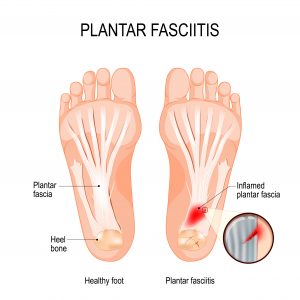
How do I prevent plantar fasciitis?
Everyone should take measures to proactively prevent plantar fasciitis, and the easiest way to do this is to stretch daily. When paired with the right footwear, these five stretches can aid in prevention of plantar fasciitis.
- Toe Stretch: With your heel on the floor, use your hand to pull your big toe toward your calf. Hold this for 15-30 seconds, repeating two to four times.
- Calf Stretch: Stand facing a wall, with your hands eye level on the wall. Position one leg in front of the other, about a step apart, and bend the knee of the foot in front. You should feel a stretch in your calf on the back leg — hold this stretch for 15-30 seconds and repeat two to four times daily.
- Towel Stretch: Sitting on the floor, place a rolled-up towel under the ball of your foot, holding on to the ends. Gently pull on the ends of the towel while keeping your knee straight. Repeat this stretch for 15-30 seconds and repeat two to four times daily.
- Toe Curls with Towel: With a small towel on the floor, use your toes to curl the towel toward you. Repeat 10 times, two to four times daily.
- Ice Bottle Massage: Place a frozen can or bottle on the floor, rolling it with the arch of your foot for 10-15 minutes, two to four times daily.
Let us restore your balance.
If you notice the discomfort in your heels persisting, our trusted team of podiatrists at Balance Foot & Ankle can work with you to alleviate the pain by customizing a treatment plan to your lifestyle. Schedule your appointment today!
Video: Bunions
Video: Bunions
Bunions are bony bumps that develop on the joint of the big toe. Because they progress slowly over time, bunions may only cause occasional or mild discomfort initially. As they progress, they can begin to affect your daily routine, making it challenging to do normal tasks. The pain is usually made worse by pressure from footwear and can cause stiffness in your big toe. In more advanced cases, bunions can even cause your big toe to cross over the second toe.
Let us restore your balance.
While bunions cannot be reversed, there are many ways to ease bunion pain and slow the progression. Our trusted team of podiatrists at Balance Foot & Ankle can help get you back on your feet with a personalized treatment plan that emphasizes a holistic approach to total wellbeing.
Are Your Feet Beach Ready?
Are Your Feet Beach Ready?
Source: The Conversation
The summer sun sees us strip off. And from a podiatrist’s perspective, that’s means the arrival of new footwear, as people ditch boots and trainers for sandals and flip flops. For the past several months, our feet have been hidden away, and in some cases, neglected, but now, most of us want our feet looking and feeling good for summer.
So as an expert in feet, here are my top tips for things you can do to get your feet ready for the summer.
General foot care
When it comes to toe nails, cut straight across – avoid cutting down the sides of the nails as you run the risk of an ingrowing toe nail.
During the winter months our feet can become dry, cracked and form hard skin called callus. A useful approach to combat this is to soak your feet in warm water for about ten minutes and then use a pumice stone or foot file to lightly take the dry skin off. This should be followed by a moisturizer cream applied daily. For those who have particularly dry and callus feet, a cream with the ingredient urea (which can hydrate and regenerate the skin, soothe irritations and soften the top layer of the skin) can be very useful.
If your feet are very dry, you may wish to put on a pair of socks after the application of the cream to increase absorbency. And if you do suffer with callus that is not responding to self-care, or you have corns – concentrated hard areas of skin that occur on the joints of the toes or on the bottom of your forefoot – then you will need to see a registered podiatrist.
If your feet are dry, with a scaly-type of rash or the skin is itchy you may have Athlete’s foot which is a fungal infection. Likewise, if you have thickened and discolored nails that crumble on cutting, it may also be due to a fungal infection known as onychomycosis. While it is tempting to cover them up with nail varnish don’t – this will only make the problem worse. Again a registered podiatrist can help and there are a number of over-the-counter fungal topical products that a pharmacist can advise you about.
Summer footwear
The less-is-more approach to footwear in the summer has many of us donning sandals and flip flops, the latter of which in particular offers minimal protection and support to the foot and lower limb. Changes to footwear styles and an increase in activity – summer walks in parks and along the beach, for example – can increase the chance of injury to the foot. In the case of flip flops, the separator between the first and second toes can cause all of the toes to claw (curl) during “toe-off” as we walk to keep the flip flop on, since there is little support across the top of the foot. This can increase the stress and forces within the forefoot area and for some individuals, the separator between the first and second toes can cause irritation of the skin resulting in blistering during the early stages of wear.
We advise that individuals stage the use of less supportive footwear such as flip flops and sandals with more supportive footwear – trainers, lace ups.
In addition, where possible, for those who wear sandals, it is advised that a style which incorporates a strap mechanism across the top of the foot be worn. By adopting a staged approach to summer footwear, it can allow the feet to adapt and minimize the risk of problems that could occur within your foot, ankle and lower limb – this can include forefoot pain, heel pain (tendinitis), fractures, strains and sprains.
It is important to note that if you have poor circulation, diabetes and/or a loss of sensation of your feet (neuropathy) you will need to be extra cautious. Remember, everyone needs to protect and care for their feet – looks are important, but pain-free walking in the summer sun is even more essential.
Harnessing Your Body's Natural Defenses
Harnessing Your Body's Natural Defenses
In recent years, doctors have learned that the body has the ability to heal itself. Autologous platelet rich plasma (A-PRP) therapy is a form of regenerative medicine that can harness your body’s own natural growth factors your body uses to heal tissue. At Balance, this method is used to harness your body’s own natural components and treat foot and ankle injuries.
A-PRP is a biological solution from the patient’s whole blood that has concentrated growth factors, high levels of platelet concentration, and proteins, that help your blood to clot. It also contains proteins that support cell growth. Researchers have produced PRP by isolating plasma from blood and concentrating it. The idea is that injecting PRP into damaged tissues will stimulate your body to grow new, healthy cells and promote healing. Because the tissue growth factors are more concentrated in the prepared growth injections, researchers think the body’s tissues may heal faster. Many famous athletes like Tiger Woods and tennis star Rafael Nadal have been known to use these injections to help heal injuries.
A member of the healthcare team at Balance will obtain a small amount of blood from your arm using a small needle and a syringe. The blood will be put through a “soft” centrifugation spinning process that will separate and concentrate the platelets and other beneficial components including growth factors. The platelets and growth factors are mixed within the plasma and are then applied to the treatment area. This A-PRP process is usually done in less than 15-20 minutes.
They are the main component of A-PRP and play a central role in hemostasis and tissue healing. Platelets are the architects of tissue healing as their presence at
an injury site initiates and guides the healing process.
Contact us and ask if A-PRP is the right treatment for you. The proper course of therapy will be determined upon examination and if the use of A-PRP may benefit you based on your injury.

There are three simple steps:
- Blood Draw: Using a small butterfly needle, a member of the Balance nursing staff will draw a small amount of blood from your arm into the Regen THT tube
- Load, Balance & Spin: The Regen THT tubes are inserted into the centrifuge and spun at high speed for 8 minutes to separate the various components of your own blood
- Platelet Preparation: After your blood is spun down and separated into its individual components, the platelet-rich plasma (the yellow area) is used by your healthcare provider to treat the injured area
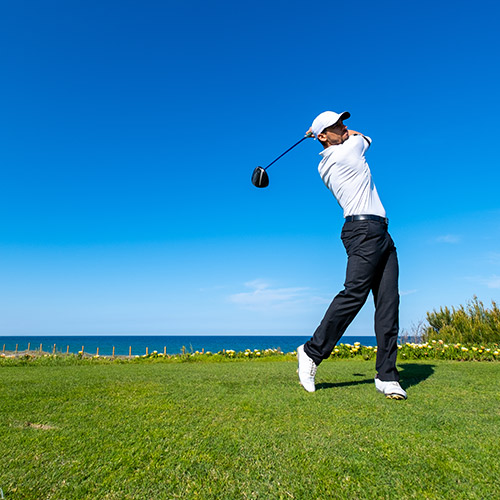
Technology for a Better Patient Experience
Technology for a Better Patient Experience
Following the patient-centered philosophy, Balance Foot & Ankle recently invested in new technology to offer patients greater choice in their medical care. Most people that suffer from joint pain may assume that an MRI is required to view an injury. However, Balance now offers technology solution at its state-of-the-art practice that could save you time when evaluating foot and ankle pain or injuries.
The mi-eye is an in-office handheld diagnostic scope that is inserted into a joint to view the injury. The scope has a light source and camera that displays a clear image of your injury on a high definition tablet display. In some instances, the in-office mi-eye procedure may be an acceptable alternative to an MRI.
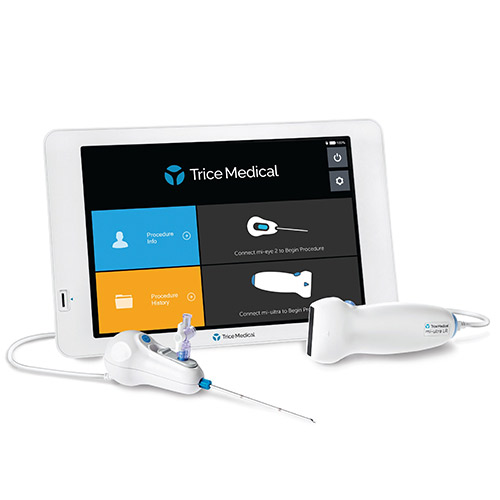
- Our team at Balance will clean and sterile prep the procedure site
- Local anesthetic numbs the skin and surrounding area to reduce pain
- Once the joint is numb, your doctor will re-prep the area and insert the mi-eye into the joint
- During the procedure, your doctor will examine your joint, giving you a real-time view with little to no pain
- After the procedure, the area is bandaged and you can return to activities as tolerated with an immediate answer and treatment plan
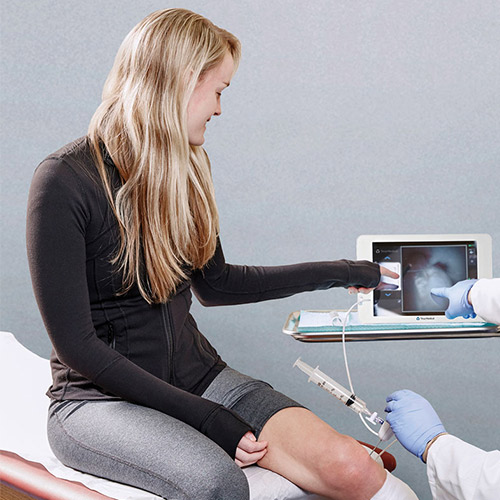
A Note of Reassurance
A Note of Reassurance
The health, safety and well-being of our patients, visitors, employees, and our community is top priority.
As a medical facility, we already adhere to strict practices and policies of cleaning and sanitation daily. Given the current situation, we are taking additional steps to be extra vigilant and keep our office safe for our patients. These additional measures include increasing the frequency of cleaning all surfaces and areas with antibacterial and antimicrobial cleaning products recommended by the CDC. We have added a medical grade HEPA/HEGA air filter purification unit in our office which filters greater than 95% of all dust, spores, mold, bacteria, viruses, chemicals, and gases larger than 0.100 microns. Scientists say that the size of the Coronavirus is 0.125 microns. Therefore, the air filter purification unit is designed to capture airborne particles of this size. Additionally, masks and alcohol-based hand sanitizer is readily available. Thank you for your understanding and cooperation.
Stay Safe & Healthy –
Dr. Jennifer L. Prezioso, DPM, FACFAS
BarkingDogShoes.com Guest Column: The Podiatrist is in! Meet Dr. Jennifer Prezioso
BarkingDogShoes.com Guest Column: The Podiatrist is in! Meet Dr. Jennifer Prezioso
Have you ever found yourself, at the end of an evening, thinking of nothing other than getting home and switching out your gorgeous-but-painful pair of shoes in exchange for an old pair of slippers that has seen better days but never lets you down? If yes, then pull up a chair, have a seat, and welcome home. My name is Dr. Jennifer Prezioso, and I am a shoe lover (and hater) just like you. But, as a Podiatric Surgeon, board certified by the American Board of Foot and Ankle Surgery, I am also a dedicated member of the world of Foot and Ankle specialists striving to help people understand their individual foot type and how to make sure they are making healthy shoe choices. So I not only empathize with those who adore shoes but face footwear challenges, I also advocate for them every day. I recently had the opportunity to write a guest column for BarkingDogShows.com on this very topic. If you would like to learn more, read the full article here.
Source: BarkingDogShoes.com
Balance Now Offers Video Visits!
Balance Now Offers Video Visits!
While we love to see you in our office, we realize it’s not always convenient to do so. Video visits allow you to receive the same quality care as you do in the clinic, without taking time off work or finding a sitter to see us.
It’s easy to get started. Next time you’re in the office or need to schedule an appointment, ask for a video visit. Next, look out for an email or text to confirm your information in our telemedicine platform, called Chiron Health. On the day of your visit, simply log in 15 minutes early to see your doctor over video. It’s that easy.
Video Visits are great for:
● Follow-up visits
● Medication questions
● Lab & test results
● General questions and more
Skip the waiting room, request a video visit for your next appointment!

